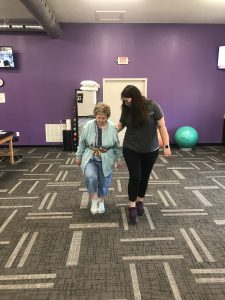Treatment for Plantar Fasciitis
May 3, 2022
We are starting to see signs of the weather turning. It seems slow but eventually summer will be here, and we will be in shorts and flip flops enjoying the warmer weather. Often our shoe choices turn “negative” as the weather improves. When we say “negative” we really mean less supportive. These less supportive shoe options can lead to increased heel and foot pain that most people refer to as plantar fasciitis.
What is plantar fasciitis?
Plantar fasciitis is the inflammation of the plantar fascia that is found on the bottom of your foot. This inflammation can cause pain with you first steps in the morning or after periods of sitting. This pain can cause abnormalities in how you walk, and those abnormalities can create other pains.
How can I prevent plantar fasciitis?
Wearing appropriate and supportive shoes is a great start. However, we understand that sometimes you want to wear shoes that go with an outfit or are specific to certain activity. Thus, what else can you do? Maintaining calf flexibility is one of the better things you can do to make sure you are “keeping plantar fasciitis at bay”.
First, the runner’s stretch for your gastroc and soleus muscles should be done at least daily. Links for those stretches can be found below. Ideally holding these stretches for 20 seconds and doing them several times per day.
Second, we want to work on our eccentric control of our calf muscles which will also provide a controlled stretch of these calf muscles. A link for this activity can be found below.
Finally, if you find that you are having heel pain the first step to relieve that pain is to wear more supportive shoes and to elevate your heel. This can be done by wearing shows with a thickened heel or by inserting a gel heel lift into your shoe.
If you have any questions about these steps or if you have tried these steps and they are not working for you, please give us a call at Witte Physical Therapy. It is important to remember that not all heel pain is the same, so treating it the same person to person will not help everyone. Witte PT can work with you to set up an individual treatment plan that will work best for you to optimize your results.
Links:
https://www.knee-pain-explained.com/calf-stretches.html (#1 and #2 for calf stretches)
https://www.verywellhealth.com/the-alfredson-protocol-for-achilles-tendonitis-2696560 (see Alfredson protocol)










